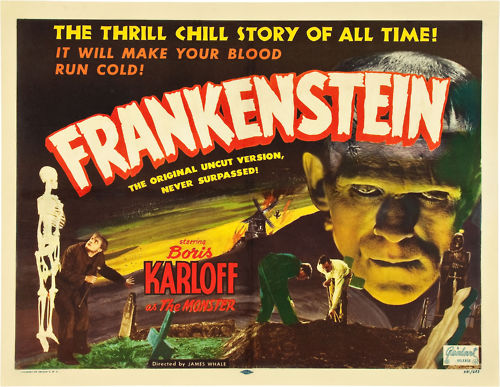We asked Sir Christopher Frayling about the impact of Frankenstein, first told 200 years ago this month. To discover more, join Christopher Frayling and guests for an event at the Science Museum on 13 June 2016.
I was once asked on a BBC radio programme “if you could have been around on a single day in the historical past – which day would it have been?”
I was Rector of the Royal College of Art at the time, so the interviewer prompted me: perhaps it would be the day when Michelangelo completed his painting of the ceiling of the Sistine Chapel in the Vatican in 1512… or the celebrated day in 1842 when the painter JMW Turner lashed himself to a ship’s mast, in a storm off Harwich, in order to paint his ‘Snow-Storm – Steam-Boat off a Harbour’s Mouth‘.
“No”, I replied. “Not a day – an evening and a night”.
The night of 17 June 1816, to be precise, when the 18 year old Mary Godwin (soon to be Mary Shelley) told the creation scene from her ‘Frankenstein’ as part of a family ghost-story session – also involving Lord Byron (aged 28), Percy Shelley (24), Byron’s physician Dr Polidori (20) and Mary’s stepsister Claire Clairmiont (also 18) – in a plush holiday villa overlooking Lake Geneva. And she scared them mightily.

The poets had been discussing “the nature of the principles of life” – the ‘vitalism’ controversy which was rocking the Royal College of Surgeons at the time, between the spiritual and the biological, a Dawkins-type debate 1816-style – and they had speculated about the experiments of Erasmus Darwin, Charles’s grandfather and a proto-evolutionist. Mary Godwin had been reading Humphrey Davy’s lectures, and knew about the public demonstrations of the power of electricity to re-animate as performed by Galvani and, more recently, Aldini.
This potent mixture of science and spooks led that night in June 1816 to the foundation of two of the great genres of popular literature in the modern world – science fiction and the vampire story. It must have been one hell of a night.
The weather outside the villa was terrible – 1816 was the year without a summer, when as Byron wrote “the fowls all went to roost at noon”, and the surrounding fields were under water at harvest-time – the interpersonal relationships between members of the Byron and Shelley parties were tense, and the idea of the storytelling competition – “we will each tell a ghost story” – was to frighten each other as much as possible, in a pleasurable way. Shelley’s phrase for this was “the tempestuous loveliness of terror”.
I would have loved to have been a fly on the wall that night.
The Villa Diodati itself, which I have visited, is not at all a sinister place: handsome grey stone, well-appointed, with some great views. But the legacy of that night is today to be seen all over the world – on small and large screens, in print and online, even in comics and on cereal packets.
The real creation myth of modern times – the era of genetic engineering and artificial intelligence – is not Adam and Eve in the Garden: it is ‘Frankenstein’.
My lecture on 13 June at the Science Museum, as close to the exact anniversary as we could get, will celebrate the 200th birthday of that amazing night and explore its long-term legacy. We will look at assorted artificial creatures – re-animated beings, replicants and robots – and will discuss the implications for today.
Sir Christopher Frayling is a British writer and award-winning broadcaster.